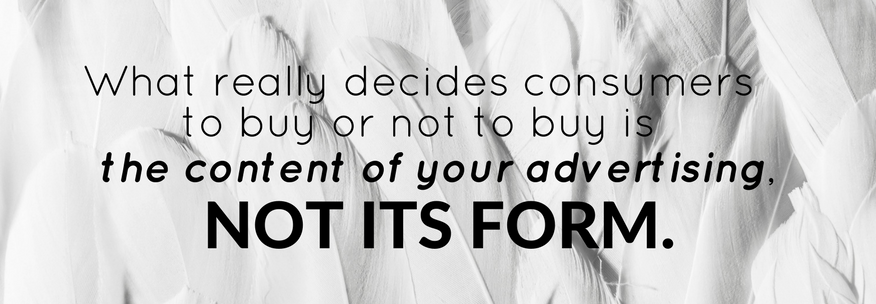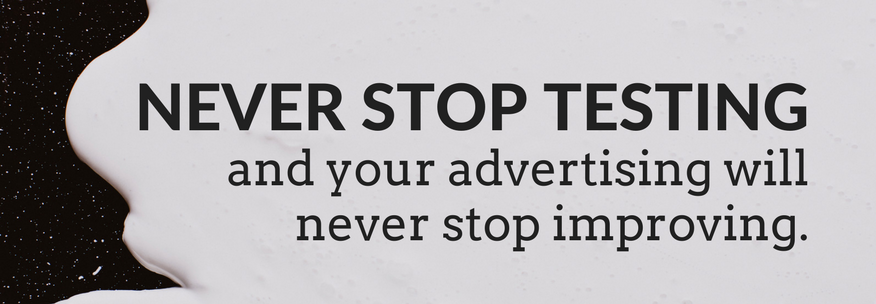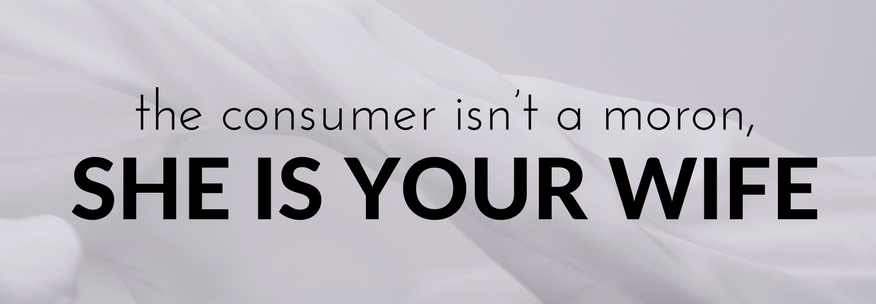The hit AMC series, “Mad Men” made 1960’s advertising sexy and dramatized the artistry required to not only develop a winning campaign, but convince the client their campaign will help them achieve their goals. To many, Don Draper romanticized advertising. But he wasn’t just fiction. Don Draper was based on several advertising juggernauts who spent their time on Madison Avenue. Most importantly, David Ogilvy.
David Ogilvy was a Digital Marketing Expert, before there was Digital Marketing
David Ogilvy is often considered the Father of Modern Advertising. In 1962, Time magazine called David Ogilvy “the most sought-after wizard in today’s advertising industry.” While Mr. Ogilvy was not practicing his craft during the digital age and most of his content is over 55 years old, his theory and rhetoric couldn’t be more relevant to our ever-changing digital marketing world. Actually, if you have read his books you’d know that David Ogilvy was a gifted digital marketer; he was just way ahead of his time.
His lessons, theories, fundamentals, and rationale applied perfectly in the 1960’s, just as well as they apply to marketing strategy in 2017.
To illustrate this, we put together a list of Ogilvy quotes that fundamentally, apply to digital marketing today.

1. “What really decides consumers to buy or not to buy is the content of your advertising, not its form.”
We have heard it all, Content Marketing doesn’t produce sales, SEO doesn’t drive conversions, Social Media for business is dead, Digital Display Advertising is dead, *insert tactic here* is the only tactic that works anymore.
There are countless reasons why something is not effective, or is less effective today, but the reality is that relative to content, digital consumers care more about the quality of your content, relevancy to their wants, and whether you satisfied their particular need, then they do about how and where they saw your message. Consumers are inundated with distractions and marketing messages to the tune of over 350 a day, according to Media Dynamics. Do you really think the consumer has a preference or recall on the form of your advertising? An Integrated (could be construed as omnichannel) marketing approach is the key to reach the consumer on the medium in which they are most receptive, at that time. Hoping for one medium to be your silver bullet is a tall task. A logical blend of mediums provides the best chance to invoke a valued impression and recall.
2. “On the average, five times as many people read the headline as read the body copy. When you have written your headline, you have spent eighty cents out of your dollar.”
Does clickbait come to mind when you read this quote? This theory is even more true today, than it was in Mr. Ogilvy’s time. The sheer quantity of headlines that we come across on a daily basis requires us to be very selective with our choices. That headline has to speak to us in a way that we feel we will benefit from the content in some way. Much like BuzzFeed preys on the FOMO aspect of headline consumption (think, “if you do not read this article, you are truly missing out on something mind-blowing”), a good headline invokes emotion. One that says “I have to read this article” or “this article will satisfy that burning question,” helps to inform the consumer what they will get out of this article and what they can expect. Simply, a great headline invokes intrigue, emotion, and inquisitiveness, which initiate an action. Just be 100% sure that you deliver on that promise, or the consumer will be less likely to fall for your charade again.
3. “There isn’t any significant difference between the various brands of whiskey, or cigarettes or beer. They are all about the same. And so are the cake mixes and the detergents, and the margarines… The manufacturer who dedicates his advertising to building the most sharply defined personality for his brand will get the largest share of the market at the highest profit.”
Again, another quote that is more true today than it was when Ogilvy stated it. Let’s take the subject of media. With Twitter, Tumblr, Medium, Facebook, Snapchat, etc. everyone is a publisher, which creates increased competition and someone else creating content in search of eyeballs and attention.
Having a brand with a consistent and well-defined personality allows your customers to understand what you stand for, what your values are, how often they should look for your content and knowing how your content matches their interests. In today’s climate, people are still loyal to brands, despite rhetoric about fleeting interests among millennials. There is a reason that people will pay a premium price for their favorite cosmetic, cellular phone, athletic shoe, or TV; they are comfortable with the product there are receiving and they are confident in the organization behind the product. Check the quarterly earnings for Apple, Google, Samsung, etc. and you will understand loyalty amongst millennials is not fleeting.
4. “Do not … address your readers as though they were gathered together in a stadium. When people read your copy, they are alone. Pretend you are writing to each of them a letter on behalf of your client.”
Truer words couldn’t have been said relative to the importance of strong, relatable copy. Media consumption is an intimate exercise. It happens to be one of the few instances in which you are refraining from talking, are purely consuming a medium in which you initiated, and is very individualistic. Even if multiple people read the same article, they may take it different ways, further adding to the intimate nature of copy consumption.
As it pertains to digital marketing, we all have received the canned email message with {name} and some super generic copy saying nothing special. This makes you feel as if you are just a number. Now how does treating your potential customer as just another number make them feel special? Hint: it doesn’t. Just like good PR practitioners custom tailor every message to the intended target, your copy should do the same thing, target the people you WANT to read this piece, not to the mass.
5. “If you’re trying to persuade people to do something, or buy something, it seems to me you should use their language, the language they use every day, the language in which they think. We try to write in the vernacular.”
We tend to gravitate to the people who we can relate to, who speak our language, and who we feel ‘get’ us. Unfortunately, we continuously develop content in a language in which we dictate, using terms in which ‘we feel’ are the best terms to use. However, our consumers might not think the same way and speak in a language of which is comfortable for them. Google still relies on keywords to connect consumers with content and if you do not speak to them in a similar tongue, you run the risk of not having your content making its way in front of them, of which you lose 100% of the sales in which you are never present for. This is like asking a French speaking person to buy from you in English, expecting a strong response.
If you understand your consumer’s need, then you already know their language. So use that language and showcase how your product, service, widget can satisfy their needs.

6. “Never stop testing, and your advertising will never stop improving.”
Armed with real time analytics, virtually limitless data sets, and measurement tools, testing our advertising and marketing has never been easier. Unfortunately, we fail to do this on a regular cadence. Drunk off of the success we have already obtained, we take our foot off of the pedal and move to the next area of need, only to leave the successful campaign stale, untouched, and expired.
If you are receiving a 4:1 ROI, why can’t you try to reach 5:1, or 6:1? If you are not always testing, how do you expect to always be getting better?
7. “Advertising people who ignore research are as dangerous as generals who ignore decodes of enemy signals.”
Again, with so much data and research available, any marketing/advertising professional who doesn’t understand the latest happenings in their industry runs the risk of becoming irrelevant.
Digital Marketing and Digital Advertising is a field that you must continue to grow, refine, and study in order to stay on top of the latest trends, and understand what is on the horizon. At WTM Digital, we are constantly reading about what is happening in the marketplace and share our thoughts each week. This industry moves constantly and if your knowledge doesn’t move with it, you leave your campaigns at risk.
8. “Our business is infested with idiots who try to impress by using pretentious jargon.”
It seems like Ogilvy has attended a few digital marketing conferences in his day. Unfortunately, Digital Marketing is infested with those who love to spout off fancy jargon and acronyms to prove their knowledge base. However, the clients do not speak freaky deaky Tech, so speak in a language they can understand, relate to, and feel confident employing. Take the time to explain tactics if a client asks and don’t be afraid to use more layman’s terms when describing strategies.

9. “The consumer isn’t a moron, she is your wife”
Another valuable lesson for any digital marketer. We build our strategies around personas, metrics, demographics, psychographics, and the like, but we fail to realize we are marketing to HUMANS. Even the most data-backed marketing campaign will fail if it doesn’t speak to the points of contention in the mind of the consumer. Think like a consumer and your message will reach consumers.
These quotes in today’s context prove that David Ogilvy was a digital marketer, 50 years too early. His lessons and rhetoric speak loudly to the pain points within the digital marketing industry. If we would all take a step back, think about how our message will help answer the consumer’s needs, we would all be more effective and there could potentially be less distaste for marketing in general.
